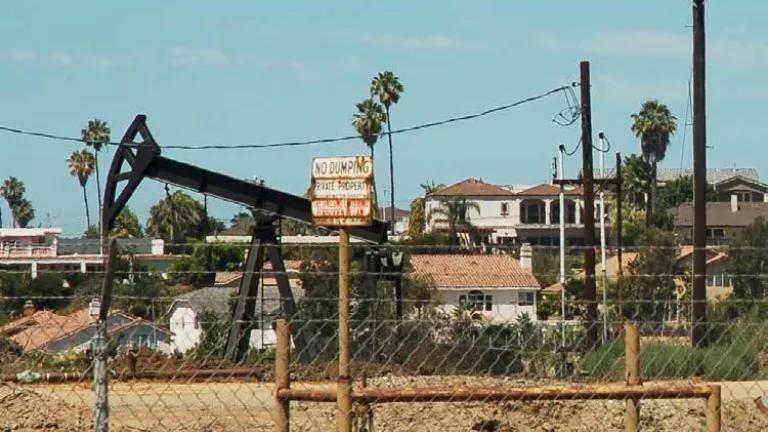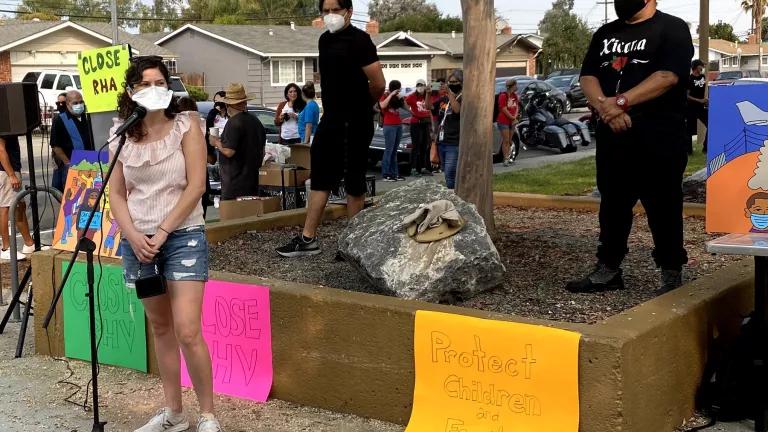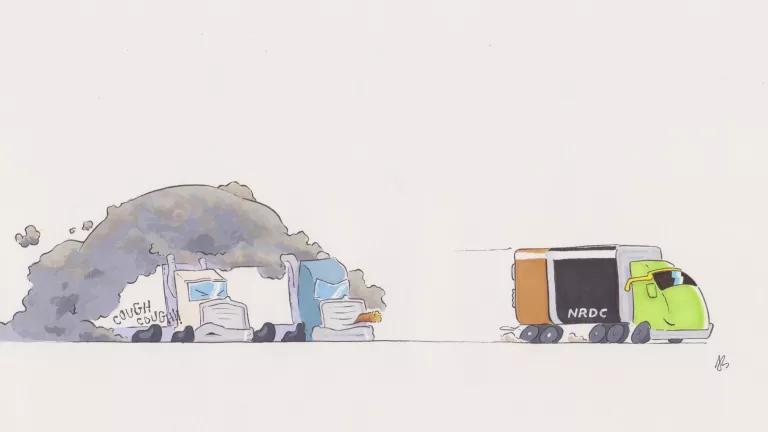
Oil well in Baldwin Hills, LA
California’s oil and gas regulators did not have a fun summer. In July, in response to a report by the Desert Sun on the findings of two watchdog groups that officials at California’s Division of Oil, Gas, and Geothermal Resources (DOGGR) had personal investments in a dozen of the world’s top petroleum companies, Governor Newsom promptly fired DOGGR Supervisor Ken Harris. Then, right after the firing, the public learned that nearly 800,000 gallons of crude oil mixed with water had been leaking from the Cymric oil field in Kern County since June. And a few weeks after that, the Desert Sun struck again with another investigative report claiming that DOGGR staff have been creating “dummy” approval files that to avoid regulatory review of steam flooding operations, the type of dirty and risky oil production process that resulted in the Cymric spill (DOGGR points out that what actually happened was a glitchy systems transition rather than anything nefarious).
Governor Newsom clearly has a big, sticky, gooey mess on his hands – and not just the kind that can be cleaned up with pumps and backhoes. Despite DOGGR’s measurably improved regulatory performance in recent years, the system is clearly still in need of improvement. And beyond the regulatory missteps, the Governor is hearing increasingly vocal encouragement – from NRDC and many others – to complement his predecessor’s groundbreaking energy demand reduction measures with policies to reduce California’s production of oil and gas.
But it’s not as easy as turning off a spigot. As of last year, California was the 7th largest producer of oil among U.S. states – down from its previous rank of 3rd in 2016 (due to production growth in other states and slowing production in California’s aging oil fields) but still a fossil fuel behemoth. The industry is a sizeable employer – and inhabits the economic and cultural heart of some Kern County communities, even as their neighborhoods of color suffer the serious health threats associated with proximity to drilling. During his visit to the McKittrick Elementary School in the wake of the Cymric spill, the Governor noted that historical pictures of oil derricks lined the school’s hallways.
Early signs, however, are that the Governor is off to a good start in transitioning California away from its oily past. As the Governor rightly recognized with his swift actions, conflicts of interest cannot be tolerated. The Governor also came out swinging against the Trump Administration’s plan to open California public lands up to fracking.
In the bigger task of transforming California’s energy systems, the Governor clearly recognizes both California’s current economic tie to oil production and the benefit of moving away from it. Visiting the Cymric spill, he remarked, “I want to begin that transition (away from petroleum) and I want to do it thoughtfully.” The Governor stated during the budget process that his draft “recognizes the need for careful study and planning to decrease demand and supply of fossil fuels, while managing the decline in a way that is economically responsible and sustainable.” The final budget sets aside $1.5 million to study ways to reduce both petroleum supply and demand.
With the legislature adjourned for the year, the Governor has additional chances to demonstrate his commitment to a modern approach to California’s oil industry, one aligned with the state’s climate goals. Several bills now on the Governor’s desk or making their way there take foundational steps toward that end, and we are hopeful he will sign them. AB 1440, authored by Asm. Levine, cleans up archaic language in the DOGGR and State Lands Commission authorizing statutes that call for the agencies to maximize oil production, making clear that protecting the public must take precedence. AB 1057, authored by Asm. Limón and SB 551, authored by Senator Jackson, would both help ensure that oil well operators provide enough financial security so that taxpayers don’t have to foot the bill for well decommissioning. AB 1057 would additionally re-focus DOGGR toward public protection by changing its name to Geologic Energy Management Division (Cal-GEM), and specifying agency purposes pertaining to protection of health and the environment, including greenhouse gas reduction. And AB 936, authored by Asm. Robert Rivas, provides heightened spill planning requirements for heavy “nonfloating” oil, to help make sure oil flowing to California’s refineries does not foul our precious coastline. This bill also includes important transparency provisions to inform the public of the volume and routes of oil transport through our state.
These bills are just a start, and the Governor has his work cut out for him in the years ahead. The overarching goals of a modern oil supply policy in California must include managing our state’s production decline – including, ensuring that the production that places communities at the greatest risk is the first to go – while effectively regulating remaining production. On the horizon in that regard is AB 345, Asm. Muratsuchi’s bill to establish a 2500’ setback for oil wells from homes, schools, hospitals, and other sensitive locations – introduced this term but now on a 2-year track. And it will, of course, be essential for the Administration to keep the budgeted study on track, focused on its mandate to find ways to reduce California production in tandem with reducing consumption, in addition to cleaning up what production continues during that transition.
As he moves California away from dependence on fossil fuels, the Governor may have to contend with the oil industry’s powerful lobby, which tends to push pretty hard to maintain the status quo. We are glad he recognizes that California can do better.




